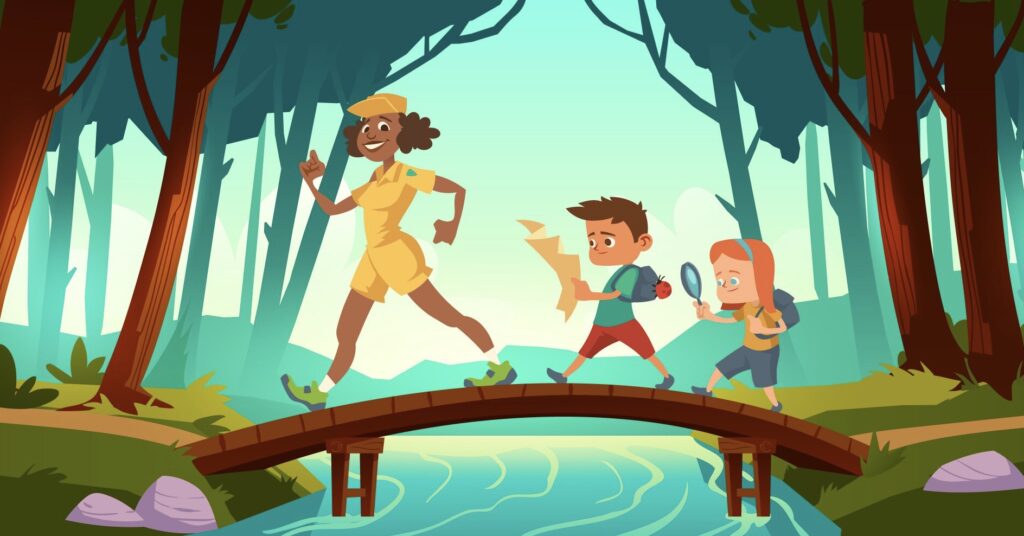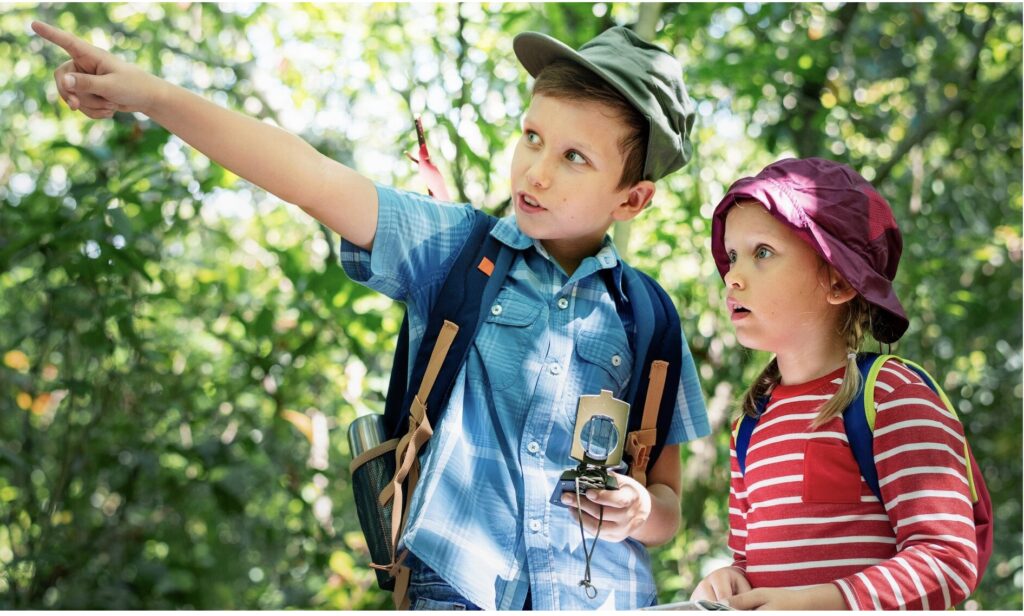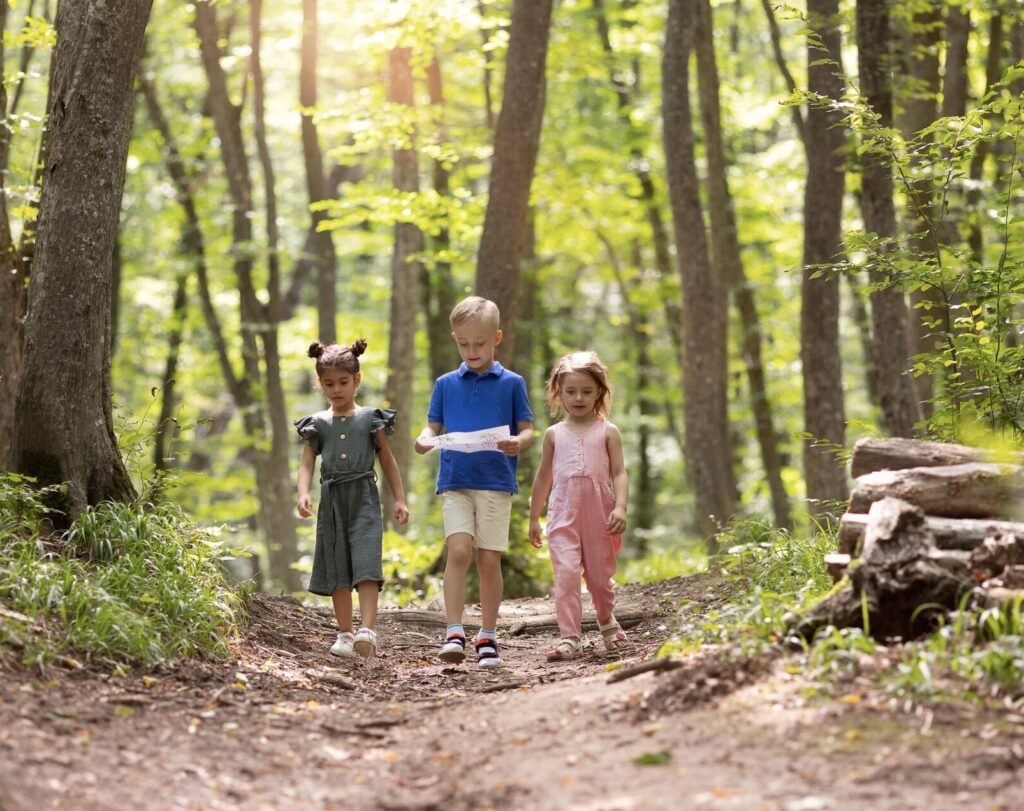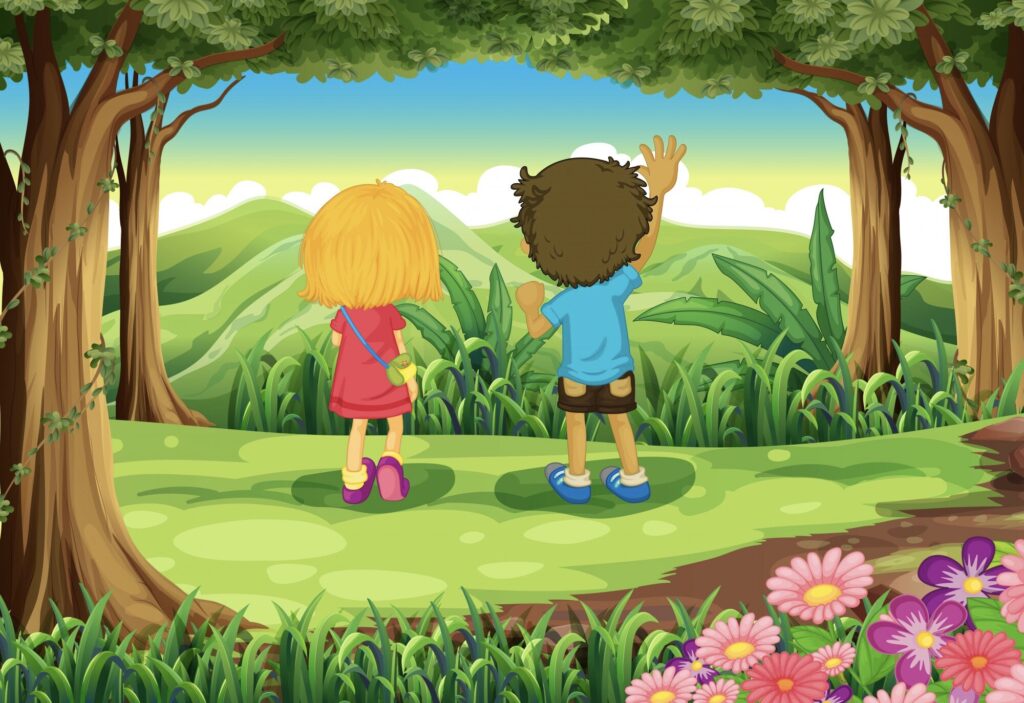
If you’re looking for an exciting, educational and perfect outdoor activity to engage your little ones, as well as kids of all ages, then we have just the thing for you! Nature scavenger hunts! In this blog, we’ll explore the wonders of scavenger hunts in nature and share some fantastic ideas to make your outdoor adventure unforgettable. So, grab your binoculars, magnifying glass and let’s dive into the world of exploration!
Preparing for the Hunt:
Preparation before embarking on your nature scavenger hunt; it’s a great way to prepare adequately. Here are some simple activities and steps to ensure a fun way to enjoy an outdoor nature scavenger hunt!
- Choose a Suitable Location: As a starting point, find a local park, nature reserve, or even your own backyard with abundant natural elements to explore. Consider the age and abilities of your kids when selecting an appropriate location. Older kids might enjoy a national park where as younger kids may enjoy their back yard or a local park.
- Create a Checklist: Develop a themed checklist of items to find or observe during the scavenger hunt. Encourage your kids to search for specific plants, insects, animal tracks, or even unique rock formations. Tailor the list to match your surroundings and spark curiosity. See the links at the bottom of the blog for outdoor printable activities, as well as an outdoor scavenger hunt list and other nature scavenger hunt printables.

Enhancing the Adventure:
To make the experience even more exciting, here are some outdoor scavenger hunt ideas and creative twists:
- Nature Bingo: Create a bingo board with images of different elements found in nature. As your kids spot each item, they can mark it off on their card. The first one to complete a line or a full card wins! The perfect way to be able to re-use the cards are by laminating them and using dry-erase markers to check off the different items.
- Treasure Map: Design a treasure map leading to a hidden surprise, such as a small prize or a picnic spot. Use landmarks and natural features to guide your little explorers on their treasure hunt.
- Time Challenges: Set a time limit for completing the scavenger hunt. This adds an element of thrill and encourages teamwork and quick thinking.
Learning through Exploration:

Nature scavenger hunts offer more than just fun; they provide valuable learning opportunities for kids. Here’s how you can turn your adventure into an educational experience:
- Encourage Observation: Prompt your kids to observe their surroundings closely. Discuss the different types of plants, insects, and animals they encounter, fostering an appreciation for the natural world.
- Environmental Awareness: Take this opportunity to teach your children about the importance of protecting nature. Discuss concepts like biodiversity, conservation, and the impact of human activities on the environment. This is one of the best ways to get children involved and aware of nature conservation.
- Nature Journal: Provide your kids with a journal to document their findings, draw sketches, or write descriptions. This helps develop their writing and artistic skills while creating a lasting memory of their adventure.

Themes and Variations:
Nature scavenger hunts can be tailored to various themes and variations, depending on the interests and age group of the children involved. Here are a few ideas to get you started:
- Seasonal Scavenger Hunt: Create a list of items specific to the current season. For example, in the spring, kids can search for blooming flowers, chirping birds, or signs of new life. Summer months could possibly be too hot, depending on the region so always consider and indoor scavenger hunt.
- Colors of Nature: Challenge children to find items of different colors in nature, like a red leaf, a blue butterfly, or a yellow flower.
- Animal Adventure: Focus the scavenger hunt on animal tracks, nests, or sounds. Encourage kids to identify the species they encounter and learn more about their habitats and behaviors.
Technology Integration:
Incorporating technology into nature scavenger hunts can add an extra layer of excitement and engagement. Consider these ideas:
- Digital Scavenger Hunt: Instead of traditional paper checklists, use a smartphone or tablet app that allows kids to take photos of the items they find. This way, they can create a digital album of their nature discoveries.
- Geocaching: Combine the thrill of treasure hunting with nature exploration through geocaching. Use a GPS-enabled device or a geocaching app to search for hidden containers, or “geocaches,” filled with small treasures.
Multi-Sensory Exploration:

Encourage kids to engage all their senses while on their nature scavenger hunt. Here are some suggestions:
- Sound Safari: Ask children to close their eyes and listen carefully to the sounds of nature around them. Challenge them to identify different bird calls, rustling leaves, or flowing water.
- Texture Adventure: Encourage kids to touch and feel different natural materials such as rough tree bark, smooth pebbles, or soft moss. This helps develop sensory awareness and appreciation for tactile experiences.
Collaboration and Teamwork:
Nature scavenger hunts provide an excellent opportunity for children to work together and foster a sense of teamwork. Here’s how you can encourage collaboration:
- Buddy System: Pair up children in teams of two or more to search for items on the scavenger hunt list. This encourages cooperation, communication, and the sharing of discoveries. This can be a fun idea to help build operation skills.
- Group Challenges: Another great option is to introduce group challenges that require teamwork. For example, building a small shelter using only materials found in nature or creating a nature-inspired artwork together.
Fun nature scavenger hunt is a fantastic way to engage children with the outdoors, fostering their curiosity, creativity, and environmental awareness. By incorporating educational elements, as well as adding creative twists, you can make the experience even more memorable. Remember, the key to a successful nature scavenger hunt is to strike a balance between fun and learning. Encourage children to explore, ask questions, and discover the wonders of the natural world. By nurturing their curiosity and appreciation for nature, you’re fostering a lifelong connection to the environment. So, unleash the adventure and let nature be their guide!


